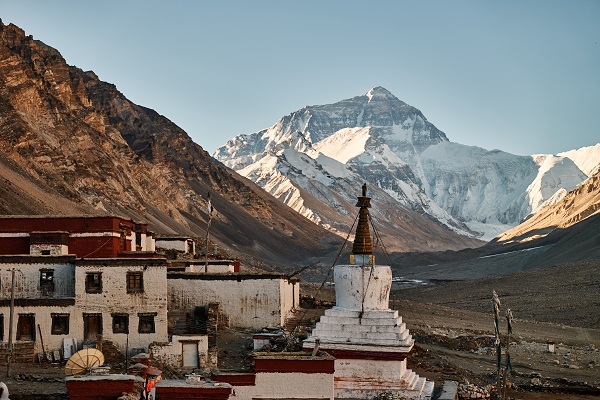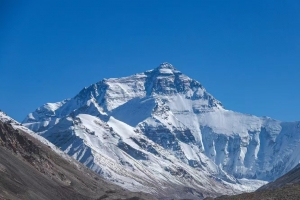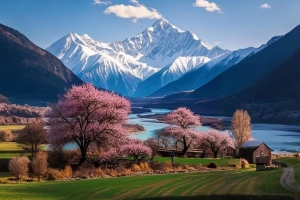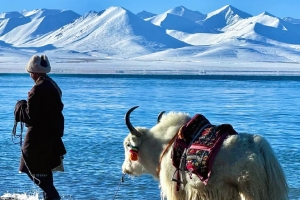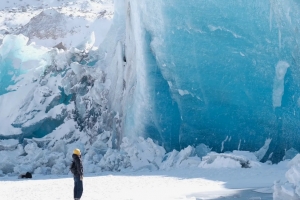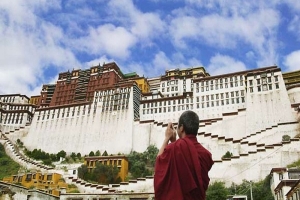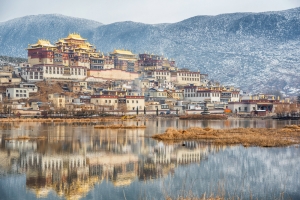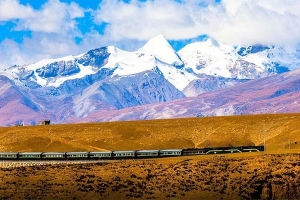Tibet is not only a place of breathtaking landscapes but also a sacred land for Buddhist pilgrims. With its deeply rooted Buddhist traditions, ancient monasteries, and revered holy sites, Tibet offers a spiritually enriching journey for those seeking enlightenment and connection with centuries-old traditions. This guide will help you explore the most significant Buddhist pilgrimage sites in Tibet and provide essential travel tips for an unforgettable experience.
Lhasa and the Spiritual Heart of Tibet
Jokhang Temple: The Holiest Shrine in Tibetan Buddhism
The Jokhang Temple in Lhasa is the most revered spiritual site in Tibetan Buddhism. Founded in the 7th century by King Songtsen Gampo, it houses the Jowo Shakyamuni statue, the most sacred image of Buddha in Tibet. Pilgrims from all over Tibet and beyond travel to perform the Barkhor Kora, a sacred circumambulation around the temple, prostrating along the path as an act of devotion.
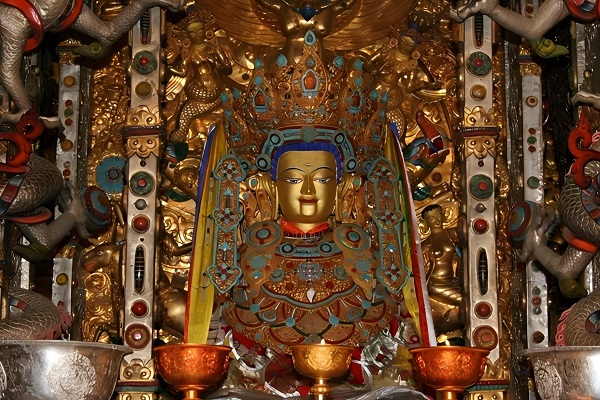
Potala Palace: The Iconic Seat of the Dalai Lamas
The magnificent Potala Palace, once the winter residence of the Dalai Lama, is a must-visit pilgrimage site. Perched on Marpo Ri (Red Hill), the palace contains thousands of Buddhist statues, relics, and stupas, reflecting Tibet’s rich spiritual heritage. A visit here allows pilgrims to immerse themselves in the legacy of past Dalai Lamas and the deep spirituality enshrined within its walls.
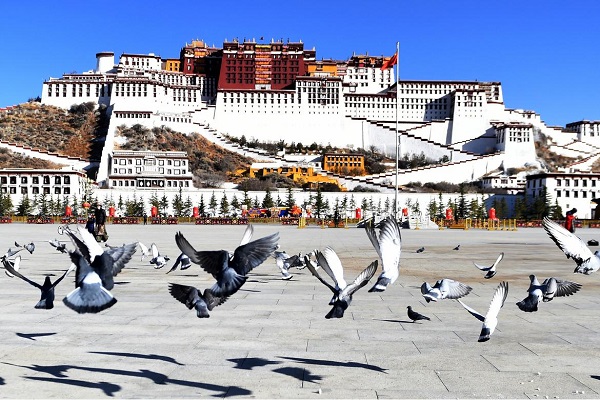
Drepung Monastery: A Beacon of Buddhist Learning
Once the largest monastery in Tibet, Drepung Monastery played a vital role in training Buddhist scholars. It was home to thousands of monks and served as the residence of the Dalai Lama before the Potala Palace was built. Today, it remains an important site for religious ceremonies and Buddhist learning.
Sera Monastery: Witness the Lively Monastic Debates
Sera Monastery is famous for its monastic debates, where monks engage in lively philosophical discussions in the courtyard. These debates, held in the afternoon, are an essential part of Buddhist learning and provide visitors with a glimpse into the intellectual rigor of Tibetan Buddhist studies.
Ganden Monastery: A Sacred Pilgrimage in the Mountains
Ganden Monastery, the first monastery of the Gelug school of Tibetan Buddhism, was founded by Tsongkhapa, the sect’s founder. Located on a mountain ridge, it offers a stunning pilgrimage kora with breathtaking views. Pilgrims often walk around the monastery, spinning prayer wheels and chanting mantras.
Mount Kailash and the Ultimate Pilgrimage
The Spiritual Majesty of Mount Kailash
Mount Kailash is considered the most sacred mountain in Tibetan Buddhism, Hinduism, Jainism, and Bon. It is believed to be the dwelling place of Demchok, a tantric deity representing supreme bliss. Completing the 52-kilometer kora around Mount Kailash is a profound spiritual journey believed to cleanse a lifetime of sins and bring enlightenment.
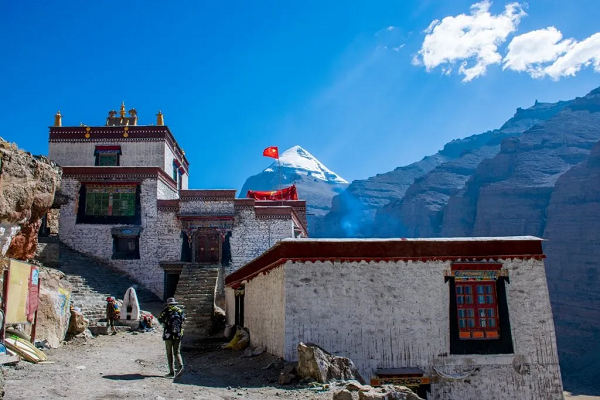
The Sacred Circuit: Completing the Kailash Kora
The kora around Mount Kailash typically takes three days to complete. The journey begins at Darchen, passing through sacred sites like the Tarboche Flagpole, Dirapuk Monastery, and the high-altitude Dolma La Pass, where pilgrims offer prayer flags and seek blessings.
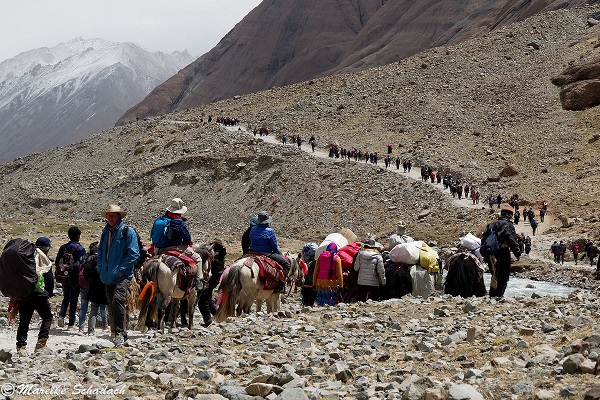
Lake Manasarovar: The Holy Waters of Purification
Located near Mount Kailash, Lake Manasarovar is another sacred pilgrimage site. Buddhists believe the lake was created by Lord Brahma and that its waters possess purifying qualities. Many pilgrims perform a kora around the lake or take ritual baths in its waters as an act of spiritual cleansing.
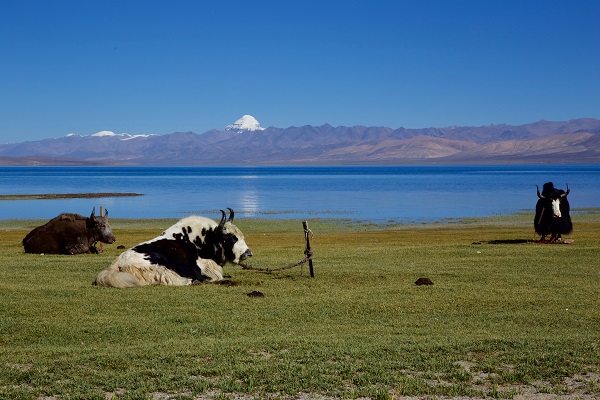
Shigatse and the Seat of the Panchen Lama
Tashilhunpo Monastery: A Spiritual Legacy
Tashilhunpo Monastery, the seat of the Panchen Lama, is an important religious center in Tibet. Founded in the 15th century, it houses the world’s largest statue of Maitreya Buddha, symbolizing future enlightenment. Pilgrims often walk around the monastery, visiting its chapels and offering prayers.

Gyantse and the Stupa of 100,000 Buddhas
Palcho Monastery and Kumbum Stupa: A Unique Blend of Buddhist Traditions
Palcho Monastery in Gyantse is unique for being home to monks from different Buddhist sects who coexist harmoniously. The adjacent Kumbum Stupa, known as the Stupa of 100,000 Buddhas, contains multiple chapels filled with thousands of Buddhist images and murals. Pilgrims circumambulate the stupa, making offerings and reciting prayers.
Sakya Monastery and Ancient Buddhist Scriptures
Sakya Monastery, known for its distinctive gray-and-red fortress-like architecture, is a treasure trove of Buddhist knowledge. It houses a massive collection of ancient scriptures, some of which are hand-written in gold. Pilgrims visit Sakya to pay homage to its sacred texts and receive teachings from the resident monks.
Pilgrimage Practices and Rituals
Kora (Circumambulation): A Path to Spiritual Merit
Walking around a sacred site in a clockwise direction while chanting mantras and spinning prayer wheels is a common Tibetan Buddhist practice. The most devoted pilgrims perform full-body prostrations along the route, measuring their progress with their own bodies.
Prayer Flags and Mani Stones: Symbols of Devotion
Pilgrims place prayer flags and mani stones (engraved with Buddhist mantras) along pilgrimage routes to spread blessings and prayers with the wind. Offering a set of prayer flags at high mountain passes is believed to bring merit and good fortune.
Pilgrimage Etiquette: Respecting Sacred Traditions
- Always walk clockwise around sacred sites.
- Show respect to monks and avoid disturbing their prayers.
- Do not touch religious artifacts without permission.
- Dress modestly when visiting monasteries and temples.
Best Time for a Tibetan Buddhist Pilgrimage
The best time for a pilgrimage tour in Tibet is from April to October, when the weather is pleasant, and most monasteries hold important religious festivals. The Saga Dawa Festival, held in May or June, is an especially auspicious time to visit Mount Kailash, as it commemorates the birth, enlightenment, and passing of the Buddha.
Travel Tips for Pilgrims
- Permits: Foreign travelers need a Tibet Travel Permit and additional permits for Mount Kailash and remote areas.
- Altitude Preparation: Acclimatization is crucial due to Tibet’s high altitude. Spend a few days in Lhasa before starting your pilgrimage.
- Packing Essentials: Warm clothing, comfortable walking shoes, sunscreen, and a good supply of snacks and water for remote areas.
- Spiritual Readiness: Bring prayer beads, offering scarves (khatas), and any personal religious items for blessings at monasteries.
A Buddhist pilgrimage to Tibet is a profound spiritual journey, offering deep insights into Tibetan Buddhism and a chance to connect with centuries-old traditions. From the sacred Jokhang Temple in Lhasa to the majestic Mount Kailash, each site holds unique significance for Buddhist practitioners. Whether you seek enlightenment, purification, or cultural immersion, Tibet’s holy sites provide an unforgettable and transformative experience for all pilgrims.

